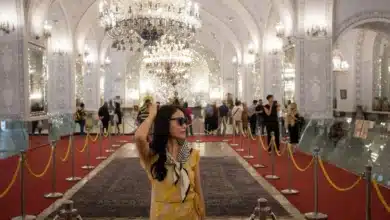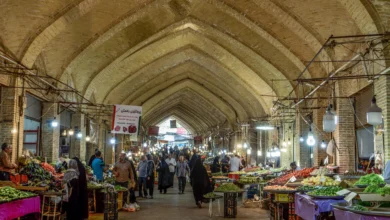
Persian culture is one of a kind. It has many aspects to offer that never go out. If you delve deep into the land of Persia, you can find a form of craftsmanship that is truly unique. a craft that has captivated a specific aspect of the world for centuries and continues to flourish up to this day.

It is nothing but the art of hand-woven carpets. Iranian carpets are world-renowned, and they are considered one of the most important artifacts that Iran offers. It can be found under the name Persian Rug. It is more than just floor coverings. They have intricate patterns that are both historical and cultural heritage. This article explores the land of Iran and the world of Persian Rugs.
Contents
A Tapestry of Time and Tradition
Persian Rugs are a piece of Iranian history. Their flourishing and creation are linked to the history of Iran and its culture. Carpet weaving is a form of tradition that goes back over 2,500 years. A tradition that was passed down to the next generations for centuries from each family member. Back in the day, these rugs were knitted for their usage and also as an art piece. As time went by, the number of families who kept this valuable tradition decreased around the country. However, many of them kept their long-life culture and left us with what we have today.

These Persian rugs were mainly used as insulation from harsh weather conditions or comfortable seating. Over time, as the techniques of weaving evolved, the focus shifted to creating breathtaking works of art.
Meticulous Craftsmanship
One of the distinguishing features of Persian carpets is the meticulous craftsmanship that goes into their creation. The process is time-consuming and takes a huge amount of effort and skill. The craftsmanship that has been honed for centuries comes into play, and the results are truly mind-blowing. The journey of a Persian carpet begins with selecting high-quality materials and colors. The primary materials are wool and silk. Wool is used in most parts of a rug as it is both durable and easy to find. Silk, on the other hand, is rare and is used only when there are intricate patterns and details. It adds to the value of the carpet since it is harder to weave and more expensive than wool. The combination of the two is amazing and creates a long-lasting art piece.

Have you ever seen a Persian carpet in real life? The vibrant colors are shining. The reason for this incredible shine lies in the color-dying process. Natural dyes and colors are made from plants and minerals, which give the carpets their unique and lasting hues. Each carpet has its own story and carries intricate patterns and motifs that signify the cultural and historical significance. These patterns and techniques are often handed down from master to apprentice, and have been practiced for decades. The actual weaving process is tiresome and takes a hefty amount of time. Craftsmen meticulously tie knots around the warp threads to create the pile of the carpet.
A Symphony of Styles
What makes Persian carpets particularly fascinating is the wide range of styles and designs. The diversity of Persian regions results in various cultures and traditions that affect the technique and pattern used in each rug. Let’s explore a few cities that have a fascinating carpet culture:
Kashan
Harmonious color combinations are the trademark for carpets that are produced in this city. They usually offer a central medallion surrounded by delicate motifs. These carpets have proven to be durable while keeping their beauty over time.

Tabriz
The patterns are usually curvilinear and include intricate floral and geometric designs. One factor that sets apart the carpets made in this city is the density of the knots. This density is higher than other carpets from other cities. It results in incredibly detailed patterns and colors that are nothing short of memorizing.

Isfahan
Using a good amount of silk indicates that a carpet is most likely from Isfahan. |The carpets that are produced in this city are some of the finest Persian rugs in the world. Besides having delicate florals and details, their elegance is unmatched.

Orienttrips Experience
Book Daily Meybod Tour
Kerman
Last on the list is Kerman. A wondrous city famous for its carpets that showcase open design patterns with large medallions and floral motifs. A great characteristic of the rugs that are produced in this city is their fine weaving technique accompanied by colorful palettes.

Stories Woven in Every Thread
If you get a chance to examine the intricate designs of Persian carpets, a hidden world of symbolism and cultural narratives reveals itself. Each pattern carries a connection to the past while conveying stories and beliefs of Iran’s cultural heritage. Take, for instance, the “tree of life,” a recurring theme in Persian carpets. This pattern goes beyond aesthetics. It is a symbol of growth, connection, and the enduring spirit of Persian culture. It can be considered as a visual metaphor for the cycle of life, with branches stretching towards the heavens and roots delving deep into the earth.
Floral elements are used widely in the carpets. For example, roses demonstrate emotions of love and beauty, while tulips symbolize renewal and rebirth. On the contrary, Jasmine flowers are usually associated with purity. The meaning behind each expertly woven flower pattern has stayed throughout centuries, reflecting the rich culture and history of Iran.

The Persian carpets that are crafted in Iran are more than just beautiful woven pieces. They are a representation of the enduring spirit and lasting tradition. To admire a creation like this, you need to look deep into the meaning of the patterns of each carpet. These meanings have passed the test of time and have been carried in many cities such as Kashan, Tabriz, Isfahan, and Kerman. Each carpet is a piece of hard work and history woven together.






